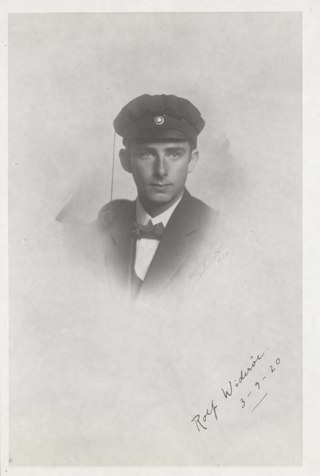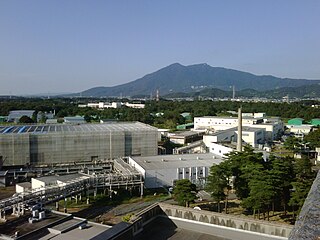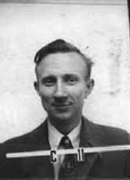
Rolf Widerøe was a Norwegian accelerator physicist who was the originator of many particle acceleration concepts, including the resonance accelerator and the betatron accelerator.

The Canadian Light Source (CLS) is Canada's national synchrotron light source facility, located on the grounds of the University of Saskatchewan in Saskatoon, Saskatchewan, Canada. The CLS has a third-generation 2.9 GeV storage ring, and the building occupies a footprint the size of a Canadian football field. It opened in 2004 after a 30-year campaign by the Canadian scientific community to establish a synchrotron radiation facility in Canada. It has expanded both its complement of beamlines and its building in two phases since opening. As a national synchrotron facility with over 1000 individual users, it hosts scientists from all regions of Canada and around 20 other countries. Research at the CLS has ranged from viruses to superconductors to dinosaurs, and it has also been noted for its industrial science and its high school education programs.

The High Energy Accelerator Research Organization, known as KEK, is a Japanese organization whose purpose is to operate the largest particle physics laboratory in Japan, situated in Tsukuba, Ibaraki prefecture. It was established in 1997. The term "KEK" is also used to refer to the laboratory itself, which employs approximately 695 employees. KEK's main function is to provide the particle accelerators and other infrastructure needed for high-energy physics, material science, structural biology, radiation science, computing science, nuclear transmutation and so on. Numerous experiments have been constructed at KEK by the internal and international collaborations that have made use of them. Makoto Kobayashi, emeritus professor at KEK, is known globally for his work on CP-violation, and was awarded the 2008 Nobel Prize in Physics.

The Australian Atomic Energy Commission (AAEC) was a statutory body of the Australian Government devoted to nuclear science, engineering and research.
Zygmunt Edward "Ziggy" Switkowski is a Polish Australian business executive and nuclear physicist. His most public role was as the chief executive officer of Australia's largest telecommunications company Telstra from 1999 to 2004. During his tenure, he oversaw the privatisation of the then government-owned corporation through a series of public tranche sales. Later positions were chairman of both NBN Co and Suncorp, a director of Healthscope, Oil Search and Tabcorp and the Chancellor of the Royal Melbourne Institute of Technology.
The Australian Nuclear Science and Technology Organisation (ANSTO) is a statutory body of the Australian Government that is responsible for nuclear research and the production of radioisotopes for nuclear medicine. It was established in April 1987 to replace the former Australian Atomic Energy Commission (AAEC), which was founded in 1952.
The Australian Synchrotron is a 3 GeV national synchrotron radiation facility located in Clayton, in the south-eastern suburbs of Melbourne, Victoria. The facility opened in 2007, and is operated by the Australian Nuclear Science and Technology Organisation.

Sir Ernest William Titterton was a British nuclear physicist.

Vladimir Iosifovich Veksler was a prominent Soviet experimental physicist.

Daresbury Laboratory is a scientific research laboratory based at Sci-Tech Daresbury campus near Daresbury in Halton, Cheshire, England. The laboratory began operations in 1962 and was officially opened on 16 June 1967 as the Daresbury Nuclear Physics Laboratory (DNPL) by the then Prime Minister of United Kingdom, Harold Wilson. It was the second national laboratory established by the British National Institute for Research in Nuclear Science, following the Rutherford High Energy Laboratory. It is operated by the Science and Technology Facilities Council, part of UK Research and Innovation. As of 2018, it employs around 300 staff, with Paul Vernon appointed as director in November 2020, taking over from Professor Susan Smith who had been director from 2012.

John Sinclair AO was an Australian environmentalist who received the Global 500 Roll of Honour award in 1990, and was awarded the Goldman Environmental Prize in 1993.

Boyce Dawkins McDaniel was an American nuclear physicist who worked on the Manhattan Project and later directed the Cornell University Laboratory of Nuclear Studies (LNS). McDaniel was skilled in constructing "atom smashing" devices to study the fundamental structure of matter and helped to build the most powerful particle accelerators of his time. Together with his graduate student, he invented the pair spectrometer.

A particle accelerator is a machine that uses electromagnetic fields to propel charged particles to very high speeds and energies to contain them in well-defined beams. Small accelerators are used for fundamental research in particle physics. Accelerators are also used as synchrotron light sources for the study of condensed matter physics. Smaller particle accelerators are used in a wide variety of applications, including particle therapy for oncological purposes, radioisotope production for medical diagnostics, ion implanters for the manufacture of semiconductors, and accelerator mass spectrometers for measurements of rare isotopes such as radiocarbon.
Hafeez Hoorani or Hafeez-ur-Rehman Hoorani or Hafeez R. Hoorani is a Pakistani particle physicist, with a specialisation in accelerator physics, and a research scientist at the CERN. Hoorani is working at the National Center for Physics, with research focus in elementary particle physics and high energy physics. Until the end of 2013, he served as scientific director of International Centre for Synchrotron-Light for Experimental Science Applications in the Middle East (SESAME) and is now research associate at the National Center for Nuclear Physics, Islamabad.

Alan Astbury (1934–2014) was a Canadian physicist, emeritus professor at the University of Victoria, and director of the Tri-Universities Meson Facility (TRIUMF) laboratory.
Paul Fawcett Greenfield AO was the President and Vice Chancellor of The University of Queensland from 1 January 2008 to 13 January 2012.

John M. "Jack" Carpenter was an American nuclear engineer known as the originator of the technique for utilizing accelerator-induced intense pulses of neutrons for research and developing the first spallation slow neutron source based on a proton synchrotron, the Intense Pulsed Neutron Source (IPNS). He died on 10 March 2020.
Dilip Devidas Bhawalkar is an Indian optical physicist and the founder director of the Raja Ramanna Centre for Advanced Technology (CAT), an institute under the Department of Atomic Energy, serving as a centre for higher studies in the fields of lasers and particle accelerators. He is credited with pioneering research in optics and lasers in India and is reported to have contributed in making CAT a partner in the International Linear Collider and Large Hadron Collider experiments of the European Organization for Nuclear Research (CERN). He is a recipient of the Shanti Swarup Bhatnagar Prize, the highest Indian award in science and technology. The Government of India awarded him the fourth highest civilian award of the Padma Shri in 2000.
Helen Maynard-Casely is an instrument scientist at the Australian Centre for Neutron Scattering at the Australian Nuclear Science and Technology Organisation (ANSTO) in Sydney, Australia. She has won numerous prizes and is an advocate for the participation of women in STEM.












